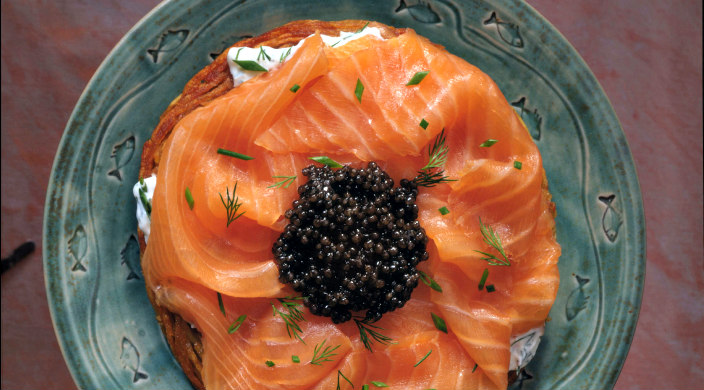
I belong to a weekly CSA, a community supported agriculture food subscription service that enables consumers to purchase local, seasonal produce as part of a share in a farm. Last month, my CSA delivered so many apples that I began to research strudel recipes so I could put them to good use.
As a Jewish mother and grandmother, I own a fair number of Jewish cookbooks, so I began perusing them, looking for one particular recipe.
After all, isn’t strudel a Jewish food?
I always thought so, especially remembering my grandmother in my native Romania gently spreading the very thin dough all over the huge dining table.
After paging through a few cookbooks, I found the strudel recipe I was looking for in The Book of Jewish Food: An Odyssey from Samarkand to New York by Claudia Roden. I also found a favorite Sephardi dish from my childhood – albondigas con berengenas (eggplant stew with meatballs). Roden provides a history of Jews and their food through the centuries, noting that even though Arabs introduced eggplant to Spain, Jews have been credited with introducing it elsewhere after they fled from Spain.
While looking for the strudel recipe, I came across many other beloved recipes in my collection of cookbooks. Here are some of my favorites:
- In The Passover Gourmet by Nira Rousso, my family’s favorite is the caponata, a Sicilian eggplant dish that also contains onion, celery, and tomatoes, as well as vinegar, capers, sugar, and seasonings to create a sweet and sour sauce. I have probably made every recipe in this book, from Sephardi charoset to matzah wine rolls. No matter how many recipes I browse online, I always come back to Rousso’s caponata, and to the same question: What’s an Italian recipe doing in a Jewish cookbook?!
- My copy of Shmulik’s Jewish Kitchen is a translation of the version published in Israel in 1994 and includes recipes for kishkes (stuffed derma or intestine), schmaltz (rendered chicken or goose fat), and cholent (traditional Jewish stew simmered overnight and eaten for Shabbat lunch) – none of which is good for cholesterol levels.
The cookbook’s pictures – and the stuffed cabbage recipe – remind me of my childhood in Romania. I always thought it was a Romanian dish because at Christmas time, the entire country, Jews and Christians alike, makes stuffed cabbage. In fact, my aunt in Bucharest pickled her own cabbage leaves in a huge jar throughout the summer and fall for just this reason. This cookbook’s recipe calls for ground meat, which is traditionally pork in Romania with mamaliga (Romanian polenta) on the side. It’s easy, however, to make stuffed cabbage “Jewish” by substituting ground beef or turkey for the pork.
- Jerusalem; A Cookbook by Yotam Ottolenghi and Sami Tamimi includes Israeli favorites such as shakshuka and falafel, Israel’s national food, which the cookbook describes as “the ultimate daily grub in Muslim Jerusalem.”
So what, exactly, makes a food Jewish?
In my first lesson on the history of Jewish music, Eli Schleifer, our beloved teacher at the Hebrew Union College-Jewish Institute of Religion in Jerusalem, played musical samples from chazzanut (traditional chanted cantorial music) to Gershwin, asking if we thought they were Jewish and why. Was it the text? Was it the performer? Was it the composer? The conclusion was always the same: There is no such thing as Jewish music.
So it is with Jewish food.
In the Diaspora, we adapted and adopted local customs until they became “Jewish.” As a result, each of us has foods we consider Jewish, but in reality, Jewish food varies dramatically with geography, heritage, and the surrounding culture. These differences don't make any of us – or our foods – more or less authentically Jewish, but rather richly diverse and blessed. This Hebrew pop song, “Falafel,” – and its distinctly Arabic/Middle Eastern style -- demonstrates this same idea with “Jewish” music. Just as Jews have “borrowed” food traditions from neighboring peoples and made them their own, our musical traditions also have been influenced and shaped by neighbors as well.
I encourage you to peruse your own cookbooks (or the internet) in search of recipes from your Jewish roots, as well as from Jewish cousins across the globe. B'tayavon!
Related Posts

“We Were the Lucky Ones:” Bringing The Holocaust Out of History Books and Into Our Homes

Harnessing the Power of our Mothers Around the Seder Table


